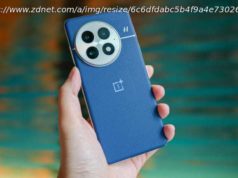The traditional keyboard and mouse (or trackpad) interface for desktop and laptop computers works for most people, but for a whole contingent of people with..
The traditional keyboard and mouse (or trackpad) interface for desktop and laptop computers works for most people, but for a whole contingent of people with limited mobility or other conditions, it just isn’ t an option. Eye tracking has long been an option, but it’s taken until now for it to get official native support in Windows.
Microsoft announced the feature in a blog post, explaining its origin in a company hackathon back in 2014. Former NFL player Steve Gleason, whose movement is limited by amyotrophic lateral sclerosis, suggested helping the many folks in situations like him to effectively interact with computers.
A hackathon team, Ability EyeGaze, put together a wheelchair that could be controlled by gaze tracking software on a Surface. The hack was impressive enough to take first place, but it also attracted the attention of the Windows team, who started looking at other applications of the technology.
Three years later (that is to say, last week) , Satya Nadella used this year’s hackathon as a venue to announce that eye tracking would soon be natively supported in Windows 10. Leading eye-tracking hardware maker Tobii is the first vendor to be supported.
Users of the beta, available now, will get an onscreen mouse, keyboard, and text-to-speech interface. (I’ ve asked the company for a more specifics) .
Tobii’s software already allows certain actions, like switching between apps or dismissing notifications with a gaze. It detailed a few new capabilities in a blog post of its own, but a representative told me that the best is yet to come:
Official support means deeper hooks in the OS, official Microsoft team members assigned to support and development, and all kinds of other good stuff.
We’ re a long way from real universal accessibility, but making commitments like this one at least creates a foundation on which to build an inclusive infrastructure. Details of the eye-tracking software will be on Microsoft’s accessibility page for Windows soon.






